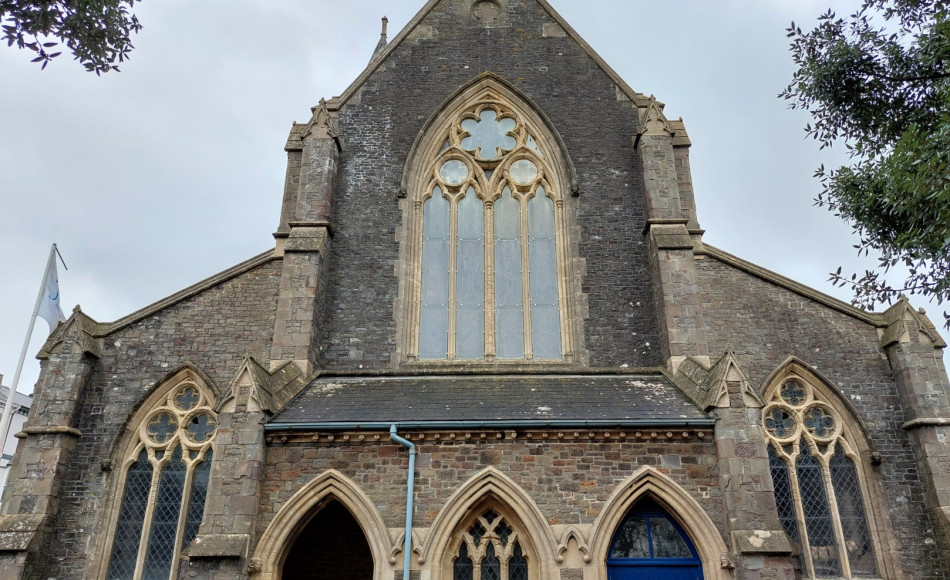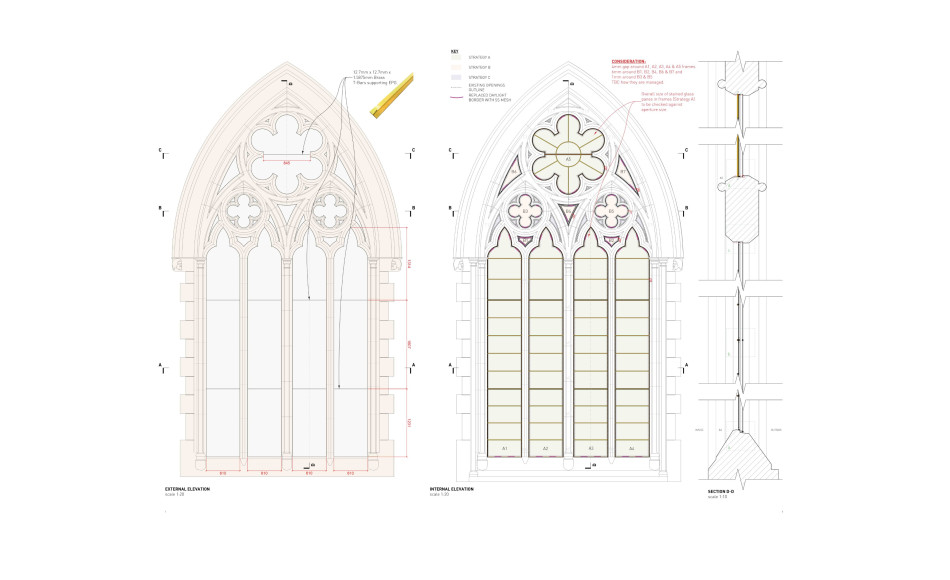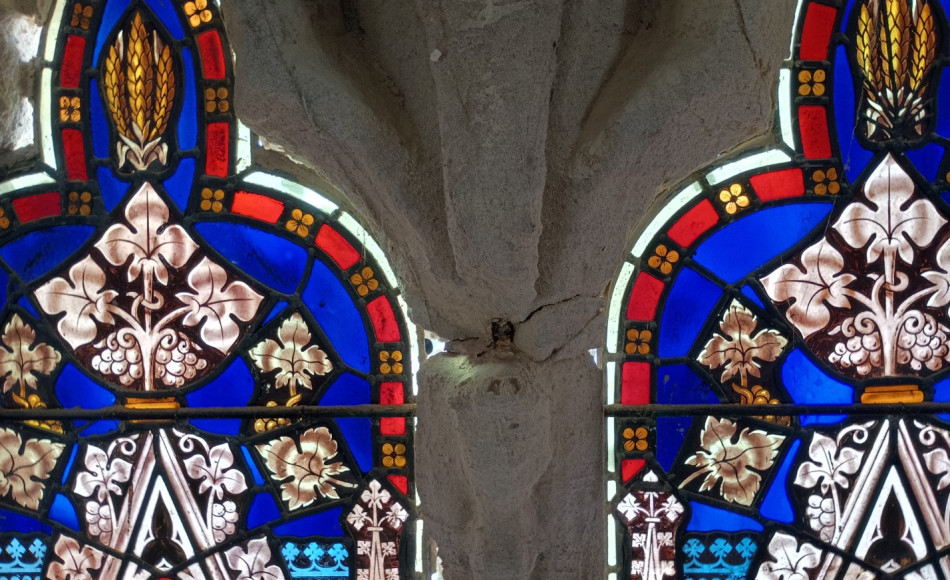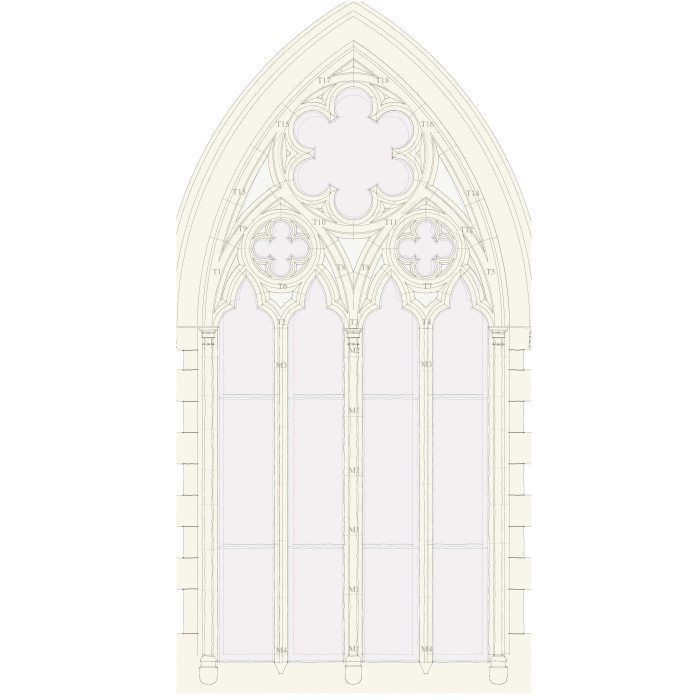West Wall Revive – External Protective Glazing
— 23 Jul 2025

The West wall is c.200m from the Atlantic Ocean

External protective glazing strategy for each area of the window

Detailed drawings for external protective glazing

Eroded areas of stonework

External Protective glazing, is exactly what it says. A glass protective layer on the external side of stained glass to protect the stained glass from the weather.
At St Philip and St James in Ilfracombe North Devon, affectionately known as Pip & Jims, the stained glass was installed when the church was built in the middle of the 19th Century by local architect John Hayward.
The Grade II* listed church is a mere 200 metres from the north Atlantic, in a valley which funnels wind, rain and salt at great speed towards the west wall. The ferocity of the wind and action of the salt has eroded the limestone windows quite significantly.
Water penetration has been an issue almost since construction and over the years there have been several projects to repair erosion and protect the stained glass.
Previously external protective glazing was put up with the stained glass still in its original glazing rebates and the external toughened glass held in place on stainless steel brackets on the outside left a small (approx. 10mm) gap around the edges of the glass panes to allow for ventilation and water to drain from both sides of the glass. The effect of this coupled with the increased severity of storms over the last 25 years has accelerated the rate of decay at the stonework because of the increased turbulence around the edge of the glass. In addition, as the limestone has eroded, and the inside face of the external glass has become coated with calcareous wash, making the glass translucent rather than transparent. Although this hasn’t affected the view of the stained glass internally, it does create a rather blank look externally.
The current West Wall Revive project seeks to repair and replace the eroded limestone windows and replace the external glazing with a superior solution.
Significant parts of the limestone windows are to be replaced to ensure structural stability and so that they can continue to hold the stained glass. This includes all of the tracery and most of the mullions with new limestone from Hartham Park which is one of the most durable and specialist UK limestones available at the moment through Wells Cathedral Stonemasons.
The new external protective glazing will be positioned in the original glazing groove thereby retaining the external depth of carved stonework and architectural articulation. The stained glass will be fixed in small brass frames inside new toughened external glazing with an approx. 30mm gap to allow for ventilation. Some of the clear glass border strips around the edge of the stained glass will be replaced with fine stainless steel mesh to allow for active ventilation and also to allow heat built up on sunny days between the two panes of glass to dissipate.
The brass framing at the edge of the glazing will be slightly more noticeable but this is offset by the reduction in the water able to get through the stained glass and the benefits for its long-term survival and maintenance.
The stonework will continue to erode, but that is a function of its position, durability and the climate. A lifespan of approximately 160 years is not bad, considering its position.